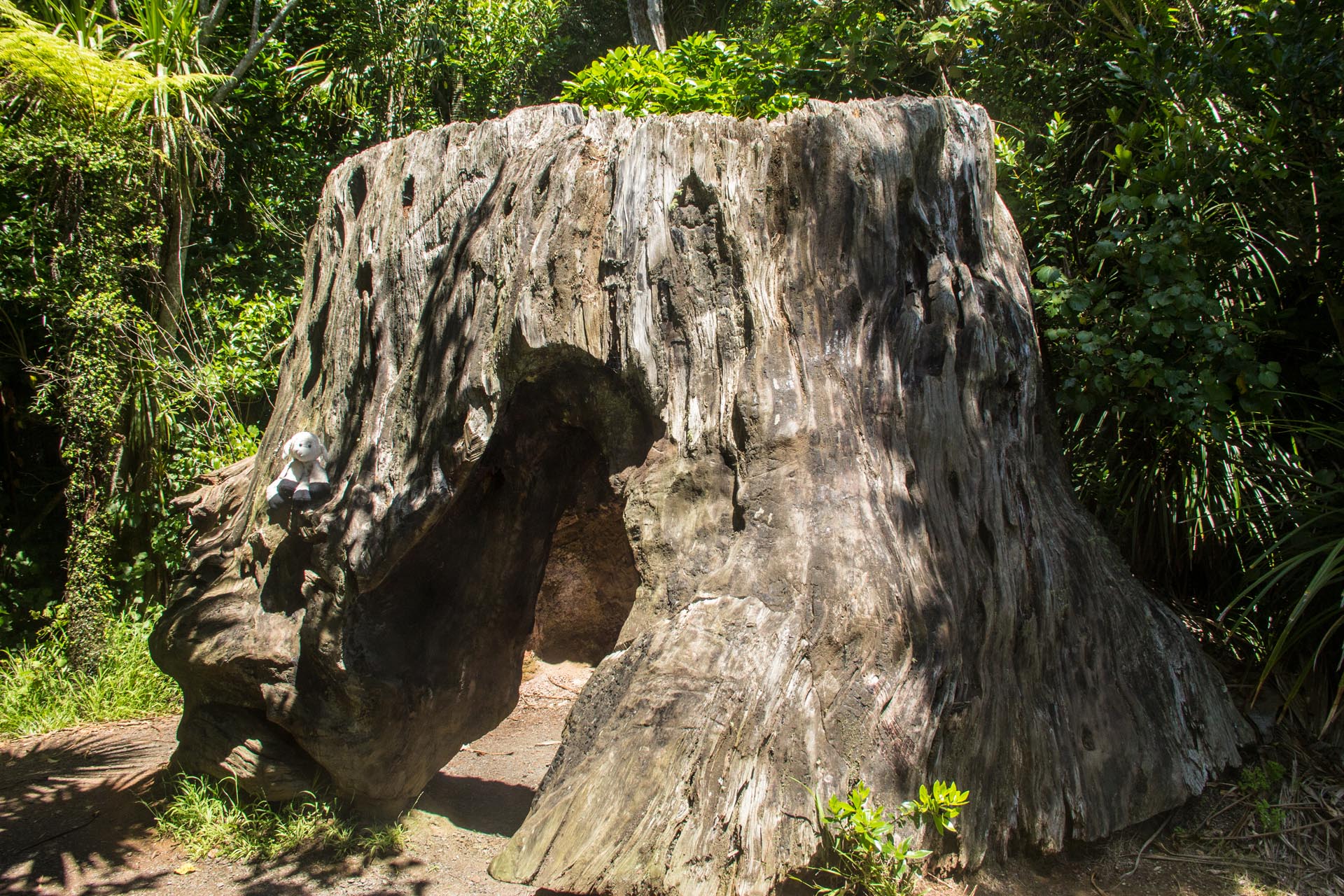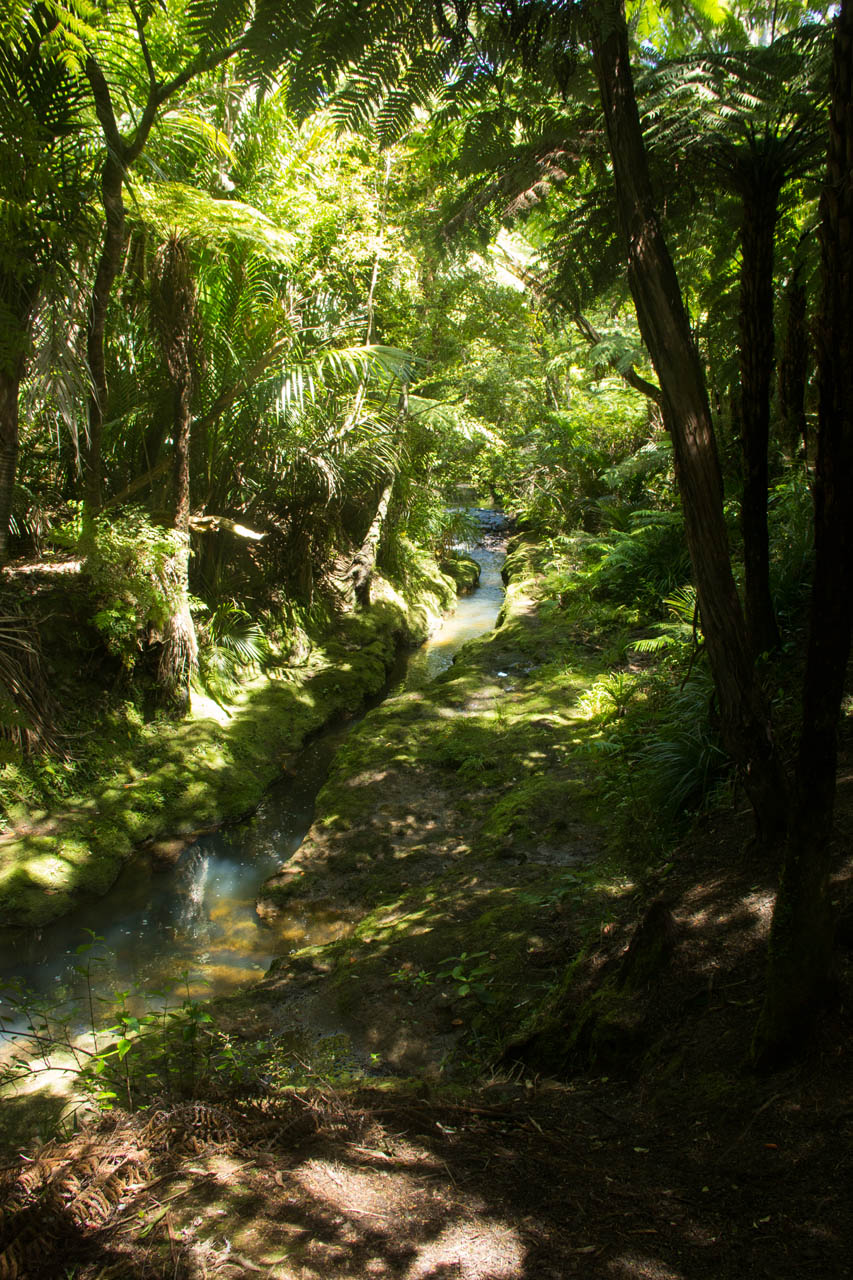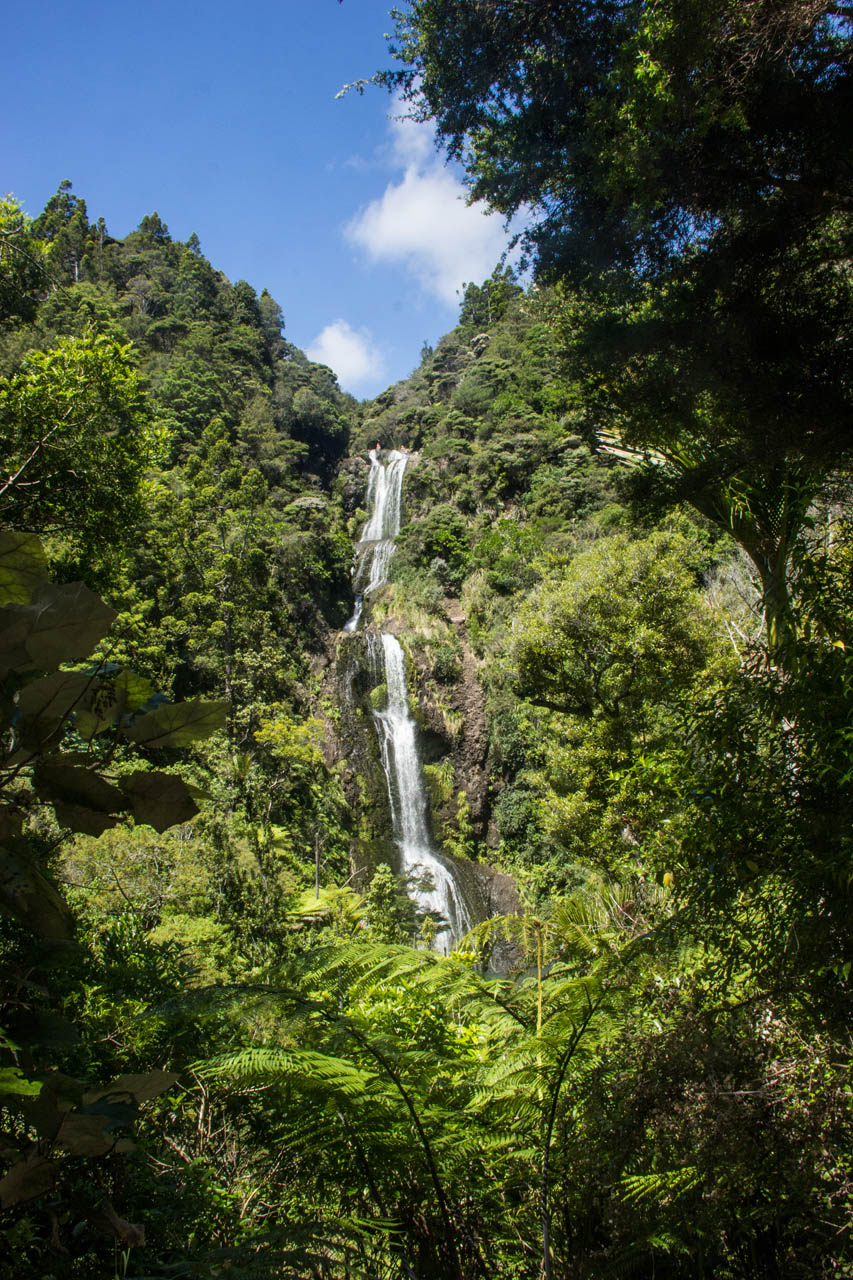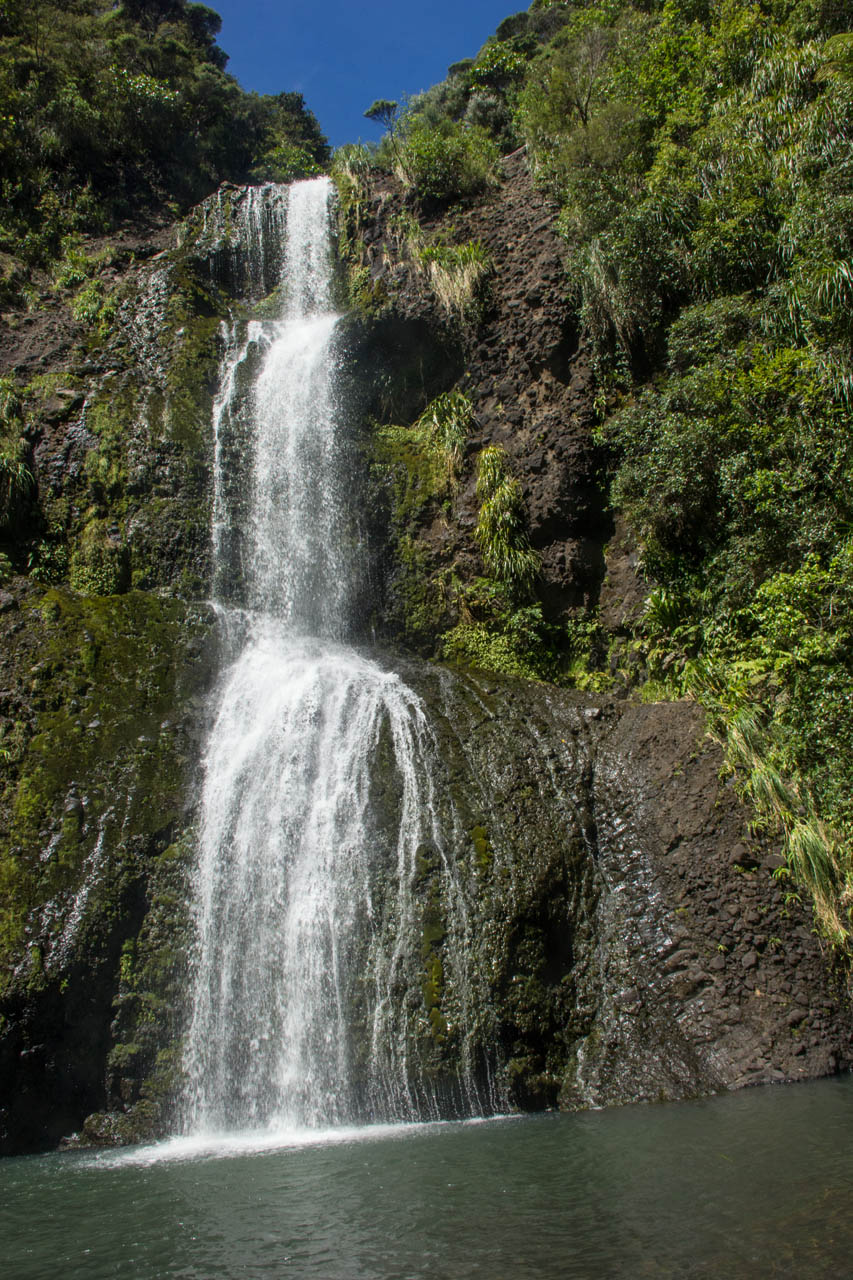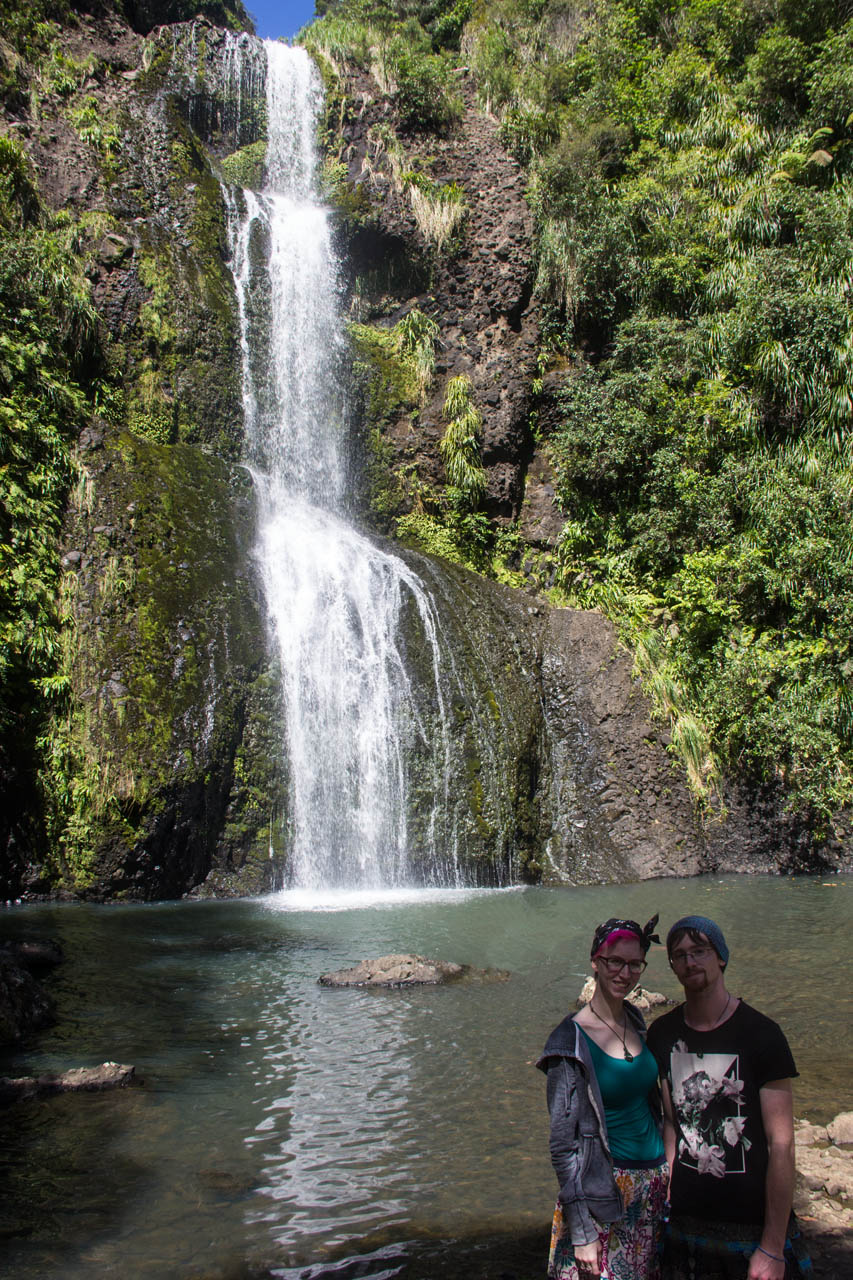Welcome to the third and final chapter of Containment Issues! As promised- although I don't know why you'd be specifically interested in such a thing- there are no beaches to be seen in this post. There is, however, a variety of other cool stuff to make up for it, so I don't feel too terrible about the beach deprivation. We took a break in the middle of the day- when the sun was at its most intense, to take a short drive away from the beach for a bit of a hike. It was welcome respite from the sun, as well as an opportunity for some great pictures!
Sheep of course wanted in on the action, and insisted on taking some photos before we got too far. He's decided to opt out of the usual selfie instead for a game of hide-and-sheep. I do love a good game of hide-and-sheep, though, so I was willing to partake.
Sheep learned that much of this area was a forest of giant Kauri trees- as soon as the Europeans settled in New Zealand, they discovered that big trees make awfully nice big boats, so most of these ancient Kauris are gone, and what few are left are endangered. Regrowth attempts are being made, but these fellas are slow growers. They can do in 50 years what a white pine tree does in 10. There are plenty of remnants of the huge timber business that marks the beginning of European residence in New Zealand- Piha sits near an old mill, and the wilderness is littered with pieces of Kauri like this one that were too large to be moved.
As we walked further into the forest, I soon suspected that I had secretly been teleported to the Amazon and was currently wandering around somewhere in South America. Beam me back to New Zealand, Scotty!
It was a beautiful day outside- low humidity and an ocean breeze, and a temperature in the mid-eighties made for perfect exploring weather. (I'm back in the States now, I get to use Fahrenheit again!). Basically, it was a pretty common December afternoon. As this was my first time on a walk in the woods ("the bush" if you're keen on picking up any isms) I was paying close attention to the differences in plant life. This, for example, is a Spleenwort:
Early Europeans, in their infinite wisdom, were of the opinion that if a person consumed the above-mentioned Spleenwort, they would be- you guessed it! Cured of any spleen-related afflictions. Now, they'd be hard pressed to tell you exactly what those afflictions were, because nobody really knew what a spleen was at that point, but I guess they thought it was worth a try. Eating strange spotty plants in the forest never killed anyone, anyway...right?
As it turns out, the only thing Spleenwort does is taste gross. No effects on spleens, positive or otherwise.
Here's a more common sight- a palm I saw frequently around New Zealand for the rest of my time there:
This is the Nikau Palm: the only palm species native to New Zealand. Besides my initial awe at palm trees in general, this one has a more specifically cool aspect: While most trees have growth rings for every year, Nikau palms have growth bands- every year, a new set of palm fronds grows and falls off, leaving a new 2 or 3 inches of trunk growth. You can see this starting to happen at the top of my photo. The process, therefore, of dating a forest which contains Nikau Palms becomes much easier and less harmful to the trees-since all you have to do is count the bands on a few Nikau palms. No trees were killed while determining the age of this forest.
At this point, it is possible that I was complaining slightly (only slightly!) about the amount of hill-climbing that had been occurring, but- and let me tell you, this became a recurring theme on this trip- the view ahead more than made up for it.
And then, impossibly, the view got even better:
Meet the Kitekite falls (which is pronounced kitty-kitty. In my opinion this makes the whole experience much better, but that's just me.) This was my very first ever southern hemisphere waterfall! It's actually three waterfalls in a tier, with swimming holes at the top, one tier down, and at the bottom. And no, it does not swirl in the opposite direction.
The first view is actually just a lookout and is still a fair distance away- after 15 or so more minutes of hilly walking, we reached the base of the falls. (Note: if you are reading this as a potential traveller to New Zealand, first- yay! Do the thing! and second- I recommend good walking shoes that won't skid. You'll be fine until you get to the falls but the rocks there are slick when wet, and part of the path goes underwater. Expect to get your feet soggy unless you take your shoes off.)
Let me just... okay. I know about waterfalls. I learned about tides and starfish in school and it was still weird to see them in real life, but I had seen waterfalls before. Big ones, too. Niagra falls. But really, there are so many waterfalls in New Zealand, and every single one of them is beautiful, big, and fabulous and they all tell such stories! I will never get tired of waterfalls, especially New Zealand waterfalls. I ended up seeing so many waterfalls here, in fact, that the rest of them are going to get their very own blog post- that's how many there were. Each one is so very different and unique from all the others.
Sheep, not to be left out of the picture taking fun, also decided to take a waterfall selfie- his first of many. He was the luckiest anyways, he got to be carried up. I had to walk.
I stuck my toes in the water, but we didn't go swimming. After a few more pictures, and some general staring-with-my-jaw-figuratively-on-the-ground, we headed back. Chronologically, the Meeting Of The Starfish happened next- but you already know about that.
I know, after the Beautiful Thing that was meeting all the Piha sea life, this seems short by comparison, but this was such a different feeling, wedged neatly in between the black sand and the starfish. See, we don't have beaches in St. Louis. At all. Like I said, I could count my beach-related experiences on three fingers before New Zealand. But we do have forests- I've spent a lot of time surrounded by trees, I've seen waterfalls, watched little steams flow lazily under my feet. This was my first experience with New Zealand as the same, but different- my first taste of the New Zealand bush, and all its native plants and animals. It was as if I was coming back to something I knew very well, but that something had shifted one step left in my absence. A parallel universe, almost. I was in a familiar forest, but I was surrounded by unfamiliar plants, and the sounds of unfamiliar birds. Here, it was like I was looking around at something I thought I knew for the first time. There are so many forests all over the world, and they're all the same but different. Some have palms, some have pines- some have young Kauri regrowth just starting to peek up amongst the canopy, trying to grow an empire that was lost to loggers decades ago.
I would like to visit more forests, and every time I do I'll be in search of this same feeling- the feeling that everything I thought I knew about a thing just took one step sideways, and that I've learned to expand my horizons just a little bit more.


